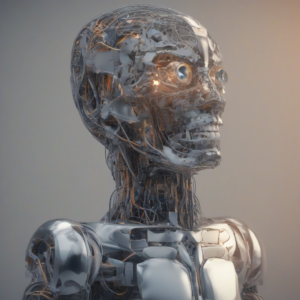Delving Deep into State Motor and Control: A Comprehensive Exploration
State motor and control systems represent a critical aspect of modern automation and robotics. This comprehensive exploration delves into the fundamental principles, diverse applications, and advanced techniques associated with these systems. We’ll examine various motor types, control strategies, and the intricate interplay between hardware and software components.
I. Understanding State Motors
State motors, also known as switched reluctance motors (SRMs), represent a unique class of electric motors characterized by their simple construction and robust operation. Unlike permanent magnet motors or induction motors, SRMs don’t utilize permanent magnets or wound rotors. Instead, their operation relies on the interaction between the stator’s salient poles and the rotor’s salient poles. This interaction generates torque through the reluctance variation in the magnetic circuit.
A. Construction and Operation
- Stator: The stator comprises a series of salient poles, each wound with a separate coil.
- Rotor: The rotor also possesses salient poles, but it lacks windings.
- Torque Production: Torque is generated by selectively energizing stator coils, aligning the stator and rotor magnetic fields. The motor’s torque is directly proportional to the difference in reluctance between aligned and misaligned positions.
- Switching Sequence: Precise control over the switching sequence of the stator coils is crucial for efficient and smooth operation.
B. Advantages of State Motors
- Robustness: SRMs exhibit high tolerance to harsh environments due to the absence of windings on the rotor.
- Simplicity: Their simple construction leads to lower manufacturing costs compared to other motor types.
- High-Speed Capability: SRMs can achieve high speeds, making them suitable for various high-performance applications.
- Fault Tolerance: The motor’s design can inherently tolerate certain fault conditions, ensuring enhanced reliability.
C. Disadvantages of State Motors
- Torque Ripple: SRMs typically exhibit higher torque ripple compared to other motor types, requiring sophisticated control strategies to mitigate this effect.
- Complex Control: Effective control requires advanced algorithms and precise switching strategies.
- Acoustic Noise: The inherent nature of the motor’s operation can lead to higher acoustic noise levels.
II. Control Strategies for State Motors
Effective control of state motors is crucial for optimizing performance and mitigating their inherent drawbacks. Several control strategies have been developed to address the complexities of SRM operation.
A. Direct Torque Control (DTC)
Direct Torque Control (DTC) is a popular strategy that directly controls the motor’s torque and flux by adjusting the switching states of the stator coils. This approach offers fast dynamic response and precise torque control but can result in increased switching frequency and torque ripple.
B. Space Vector Modulation (SVM)
Space Vector Modulation (SVM) is a sophisticated control technique that optimizes the switching patterns to minimize torque ripple and harmonic content. It excels in achieving smooth and efficient motor operation but requires complex calculations and higher computational resources.
C. Hysteresis Current Control
Hysteresis Current Control is a simpler approach that maintains the stator current within a predefined hysteresis band. This method is relatively easy to implement but may result in higher switching frequencies and less precise torque control compared to other techniques.
D. Model Predictive Control (MPC)
Model Predictive Control (MPC) employs a predictive model of the motor to anticipate future behavior and optimize control actions accordingly. This sophisticated approach enables advanced control features, including predictive torque ripple reduction and improved efficiency, but it demands significant computational power.
III. Hardware Components in State Motor Control Systems
Effective state motor control necessitates a well-defined hardware infrastructure. This typically includes various components working in concert.
A. Power Converter
A power converter, usually a voltage source inverter (VSI) or a current source inverter (CSI), acts as the interface between the power supply and the motor. It provides the necessary switching action to energize the stator coils based on the control signals generated by the controller.
B. Microcontroller Unit (MCU)
A microcontroller unit (MCU) serves as the central processing unit for the control algorithm. It receives feedback from sensors and executes the control strategy to generate the appropriate switching commands for the power converter.
C. Current Sensors
Current sensors measure the current flowing through each stator coil, providing essential feedback for the control algorithm. Accurate current measurement is crucial for precise torque and flux control.
D. Position Sensors
Position sensors, such as hall-effect sensors or resolver sensors, provide information about the rotor’s position. This feedback is vital for accurate torque control and ensuring smooth motor operation.
E. Speed Sensors
Speed sensors (e.g., optical or magnetic encoders) measure the motor’s rotational speed, providing feedback for speed control loops and monitoring the overall system performance.
IV. Software Aspects of State Motor Control
The software component plays a critical role in state motor control, implementing the chosen control algorithm and managing the interaction with the hardware components.
A. Control Algorithm Implementation
The selected control algorithm (DTC, SVM, hysteresis, MPC, etc.) is implemented in software, usually using real-time operating systems (RTOS) or dedicated control libraries. The software’s efficiency and responsiveness are crucial for optimal motor performance.
B. Sensor Data Acquisition and Processing
The software acquires and processes data from various sensors (current, position, speed), performing necessary signal conditioning and filtering to ensure accuracy and reliability.
C. Communication Protocols
Communication protocols (e.g., CAN, SPI, I2C) facilitate data exchange between the MCU, sensors, and other components within the control system. The selection of appropriate protocols depends on factors such as data rate and communication distance.
D. Real-Time Operation
The software must operate in real time, ensuring that control commands are generated and executed within the required time constraints to maintain stability and accurate motor control. This often involves careful scheduling of tasks and optimization of code execution.
V. Applications of State Motors and Control
State motors and their associated control techniques find applications across a broad spectrum of industries and applications.
A. Automotive Industry
State motors are increasingly used in electric vehicles and hybrid vehicles, particularly in powertrain systems and auxiliary components. Their robustness and efficiency make them attractive for demanding automotive applications.
B. Robotics
In robotics, state motors provide a compact and efficient solution for actuating robotic arms, legs, and other moving parts. Their relatively simple construction and high-torque capabilities are beneficial in robotics applications.
C. Industrial Automation
State motors find application in various industrial automation systems, such as conveyor belts, pumps, and compressors. Their high-speed capability and robustness make them suitable for these demanding industrial environments.
D. Aerospace Applications
State motors are used in certain aerospace applications, such as actuators and control surfaces, due to their high power-to-weight ratio and ability to withstand harsh operating conditions.
E. Renewable Energy
In renewable energy systems, state motors find use in wind turbines and solar tracking systems. Their high efficiency and reliability make them suitable for these demanding applications.
VI. Advanced Topics in State Motor and Control
Ongoing research and development continue to push the boundaries of state motor and control technologies.
A. Sensorless Control
Sensorless control techniques eliminate the need for position sensors, reducing cost and complexity while maintaining effective motor control. This area is an active area of research and development.
B. Fault Diagnosis and Tolerance
Advanced fault diagnosis and tolerance techniques are being developed to improve the reliability and robustness of state motor control systems. These techniques aim to detect and mitigate potential faults, ensuring continued operation even under adverse conditions.
C. Artificial Intelligence (AI) in Control
The application of AI and machine learning is transforming state motor control, offering the potential for adaptive control, optimized performance, and enhanced fault diagnosis. AI-based control strategies can learn and adapt to changing operating conditions, further improving the efficiency and robustness of these systems.
D. Integration with Other Systems
The integration of state motor control systems with other systems, such as energy storage devices and power grids, is crucial for optimizing overall system efficiency and reliability. This area is increasingly important in applications such as electric vehicles and renewable energy systems.





